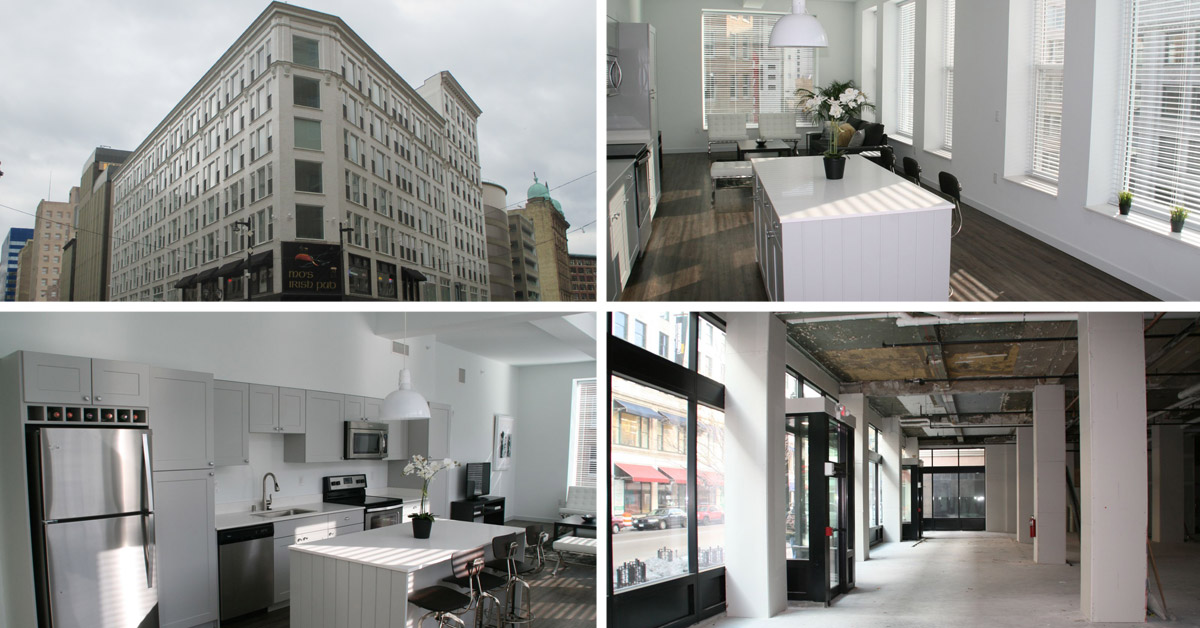Historic Preservation Tax Credits Survive
Republican tax plan changes program, but doesn't eliminate it.
After weeks of debate Republicans just passed the largest overhaul of the federal tax code since 1986. Far more than just an income tax cut, the changes to the federal tax code will have far reaching impact, including changing how people get to work with the elimination of the commuter tax benefit program and eliminating the individual health insurance mandate, a key part of the Affordable Care Act. One program that was repeatedly in peril was the historic preservation tax credit program, a job-creating program that encouraged rehabilitation of historic buildings.
The program has been a key catalyst in Milwaukee’s downtown renaissance, supporting the redevelopment of virtually every building at the former Pabst Brewery and many others around town, including the elegant Mackie Building. However, its impact isn’t limited to big cities: in Wisconsin 60 percent of the credits go to communities with populations under 100,000. According to State Historic Preservation Officer Jim Draeger, in Wisconsin 16 percent of the credits go to buildings that have been vacant more than 20 years.
Developers can receive the federal income tax credits for 20 percent of any eligible project costs to redevelop any historically-designated properties. Developers then use the credits themselves or sell them for less than their stated value. The credits, paired often with state preservation credits, are a critical piece of financing projects that would otherwise be economically unfeasible compared to building new structures on empty sites.
Dropped from the program under both the Senate and House bills was a provision that offered a 10 percent credit for job-creating redevelopment of buildings built before 1936 that haven’t been historically-designated by the National Parks Service.
The National Trust for Historic Preservation, the leading non-profit that lobbies for historic preservation, characterized the program’s inclusion in the final bill as a big win, but the long-term affects of the changes are unknown.
The trust notes that the inclusion of the credits in the final tax overhaul came after the organization held its “most significant advocacy campaign in decades.” Approximately 13,000 people took action, sending 40,000 letters to Congress.
State Credit Still in Limbo
While the preservation of the federal preservation tax credit is a win for Milwaukee, the state’s program faces an uncertain future. Wisconsin added a supplemental five percent credit in 1990 and increased it to a matching 20 percent credit in 2014. To the surprise of many, Gov. Scott Walker, who signed the 2014 hike into law, did a turnaround and drastically cut the credit in September in one of the 99 partial vetoes he made to the state budget. The state legislature had agreed to a $5 million per project cap, but Walker used the governor’s Frankenstein veto power to cut a zero, slashing the cap to $500,000 per project.
There is hope for restoration of the tax credit program in Wisconsin following Walker’s devastating veto. Former assembly representative Joe Leibham, manager of government affairs for Foley & Lardner, has been lobbying on the matter on behalf of developer Joe Alexander and others. He told those in attendance at a November meeting of historic preservation advocates that legislation is expected to be introduced this spring by Sen. Alberta Darling (R-River Hills), Sen. Dan Feyen (R-Fond du Lac), Rep. Robert Brooks (R-Saukville) and Rep. Mike Rohrkaste (R-Neenah) that would remove or increase the $500,000 limit.
Leibham noted that the governor’s chief of staff, Rich Zipperer, has offered conceptual support for the proposal that would increase the limit to $3.5 million per project. A final agreement on the number is expected to come following a revenue estimate from the Legislative Fiscal Bureau in January.
Until new legislation is passed, Draeger is bracing for an incredible surge in applications. The new $500,000 cap doesn’t go into effect until July 1st. Applicants seeking to beat that deadline will need to submit their paperwork by February 15th.
If you think stories like this are important, become a member of Urban Milwaukee and help support real independent journalism. Plus you get some cool added benefits, all detailed here.
Eyes on Milwaukee
-
Church, Cupid Partner On Affordable Housing
 Dec 4th, 2023 by Jeramey Jannene
Dec 4th, 2023 by Jeramey Jannene
-
Downtown Building Sells For Nearly Twice Its Assessed Value
 Nov 12th, 2023 by Jeramey Jannene
Nov 12th, 2023 by Jeramey Jannene
-
Immigration Office Moving To 310W Building
 Oct 25th, 2023 by Jeramey Jannene
Oct 25th, 2023 by Jeramey Jannene






















